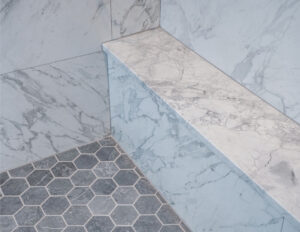Why Is Your Bathroom So Cold? (And How to Fix It Without Moving to the Tropics)
Let’s face it: stepping out of a warm shower into a bathroom that feels like Antarctica isn’t exactly the “spa-like experience” we all dream of. If your toes are currently staging a rebellion every time they hit those icy tiles, you’re not alone. At Verified Builders here in Denver, we’ve heard this gripe more times than we’ve seen people argue over paint swatches (spoiler: it’s a lot). So, why is your bathroom so cold? And more importantly, how do you fix it without burning your entire savings account? Let’s break it down—no parka required.
Contents
- 1 Why Your Bathroom Feels Like a Walk-In Freezer
- 2 1. Poor Insulation (Or None at All)
- 3 2. Ventilation Overkill
- 4 3. Outdated Windows
- 5 4. Flooring Fails
- 6 How to Turn Your Bathroom Into a Cozy Oasis (No Flamethrower Needed)
- 7 Insulation Upgrades: Stop the Drafts
- 8 Smart Ventilation Solutions
- 9 Window Replacements: Bye-Bye, Drafts
- 10 Flooring Fixes
- 11 When to Call the Pros (Hello, Verified Builders!)
- 12 Cold Bathroom Fixes at a Glance
- 13 FAQs: Your Burning Questions, Answered
- 14 Final Thoughts: Stop Numb Toes, Start Living
Why Your Bathroom Feels Like a Walk-In Freezer
We’ve all been there: one minute you’re blissfully soaking in hot water, the next you’re lunging for the towel rack like it’s a lifeline. Here’s the cold, hard truth (pun intended) about what’s turning your bathroom into a polar vortex.
1. Poor Insulation (Or None at All)
Older homes—especially here in Denver—often skimp on insulation in bathrooms. Walls, ceilings, and floors might as well be made of tissue paper if they’re not properly insulated. Cold air sneaks in, warm air escapes, and suddenly your bathroom doubles as a meat locker.
Pro Tip: If your bathroom shares a wall with the great outdoors (looking at you, en-suite bathrooms), insulation isn’t optional—it’s survival gear.
2. Ventilation Overkill
Ah, the bathroom fan. It’s great for banishing steam… and all the heat in the room. Many fans are so overzealous they suck out warm air faster than a toddler inhales candy. FYI: That’s not a feature.
3. Outdated Windows
Single-pane windows? More like single-pane disasters. They leak air like a sieve and might as well come with a sign that says, “Welcome, frostbite!” Even “newer” windows installed 15+ years ago can’t compete with modern energy-efficient models.
4. Flooring Fails
Tile and stone floors are chic, but let’s be real: they’re basically ice rinks in disguise. Without radiant heating or proper underfloor insulation, you’ll need mittens to brush your teeth.
How to Turn Your Bathroom Into a Cozy Oasis (No Flamethrower Needed)
Ready to ditch the arctic vibes? Here’s how to warm things up—without selling a kidney to fund it.
Insulation Upgrades: Stop the Drafts
- Wall & Ceiling Insulation: Spray foam or fiberglass batts keep heat where it belongs—inside.
- Floor Insulation: Rigid foam boards under tile or heated flooring systems = game-changer.
- DIY vs. Pro: Sure, you could YouTube your way through insulation… or you could call Verified Builders, your local home renovation contractor, to handle it safely (and without turning your bathroom into a dust tornado).
Smart Ventilation Solutions
Swap that ancient fan for a humidity-sensing model that kicks on only when needed. Bonus: Many qualify for energy rebates. Who knew being eco-friendly could save your toes?
Window Replacements: Bye-Bye, Drafts
Upgrade to double- or triple-pane windows. Not only do they lock out cold air, but they also slash energy bills. IMO, it’s a win-win.
Flooring Fixes
- Radiant Heating: Electric mats or hydronic systems under tile = pure luxury.
- Area Rugs: Quick, cheap, and less “Icelandic tundra.”
When to Call the Pros (Hello, Verified Builders!)
Look, we get it—DIY projects can be fun… until you’re knee-deep in fiberglass insulation, questioning all your life choices. Here’s when to wave the white flag and call in a remodeling company that actually knows what they’re doing (cough like us cough).
- You’re Tackling a Full Renovation: If your bathroom remodeling project involves moving plumbing, electrical work, or structural changes, you need a general contractor—not duct tape and hope.
- Luxury Upgrades: Dreaming of heated towel racks or a steam shower? Our team specializes in luxury home renovations that balance indulgence and practicality.
- Basement Bathrooms: Cold air sinks, so basement bathrooms are notorious for their chill. Our basement remodel contractors can insulate, waterproof, and turn that dungeon into a delight.
Why Choose Verified Builders?
- We’re Denver locals who understand regional quirks (like sudden snowstorms in May).
- Our reviews speak for themselves—5 stars, baby.
- From custom remodels to whole house remodeling, we’ve got your back.
Cold Bathroom Fixes at a Glance
| Issue | Solution | Cost Estimate | DIY or Pro? |
|---|---|---|---|
| Drafty Windows | Energy-efficient window replacement | $300–$800/window | Pro (for precise install) |
| Poor Insulation | Spray foam or fiberglass batts | $1.50–$3.50/sq ft | Pro (messy & technical) |
| Icy Floors | Radiant heating system | $8–$15/sq ft | Pro (electrical work) |
| Overactive Vent Fan | Humidity-sensing fan upgrade | $150–$350 | DIY (if handy) |
FAQs: Your Burning Questions, Answered
1. “Can I Fix a Cold Bathroom Myself?”
Small fixes? Absolutely—caulk those drafts, add rugs, or swap the fan. But for insulation, electrical, or home addition contractor needs? Let Verified Builders handle it.
2. “How Do I Know If It’s a Bigger Issue?”
If you’re shivering year-round, notice mold, or your energy bills are soaring, it’s time for a pro. Cold bathrooms can signal insulation gaps, HVAC issues, or moisture problems.
3. “What’s the Cost of a Full Bathroom Remodel?”
In Denver, expect $15k–$50k+, depending on size and finishes. Bathroom renovation contractors like us offer free estimates—no guesswork required.
Final Thoughts: Stop Numb Toes, Start Living
There’s no law saying your bathroom has to double as a cryotherapy chamber. Whether you need a quick fix or a whole house remodeling masterplan, Verified Builders is here to help. We’re just a click or call away—and unlike your bathroom floor, we promise we won’t leave you out in the cold. 😉
Ready to Warm Things Up?
Contact Verified Builders today for a consultation. Let’s turn your bathroom from “frostbite central” to “cozy retreat” — before winter hits (again).


